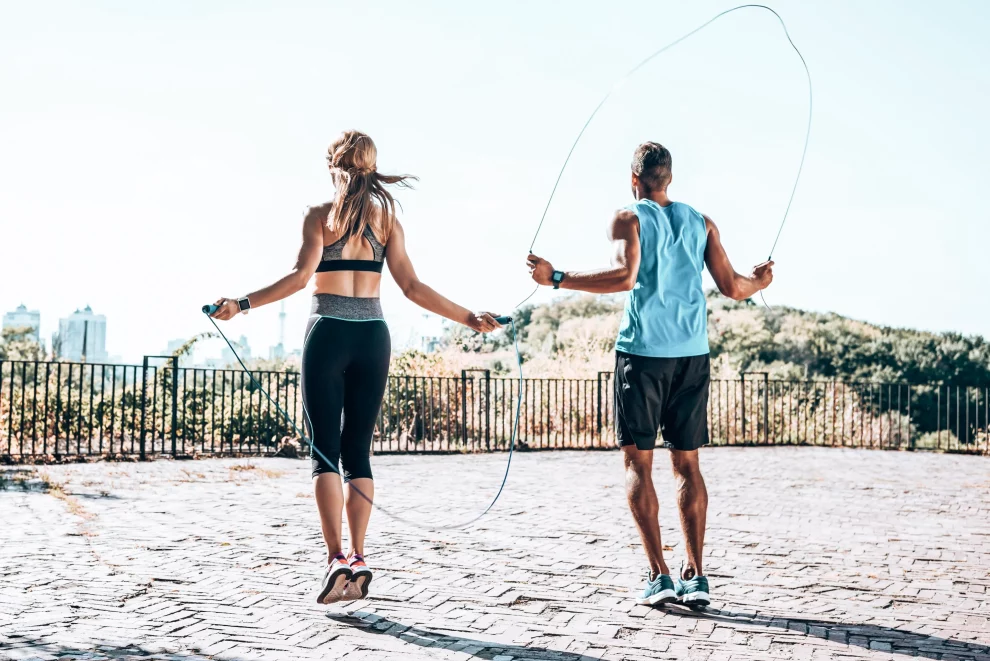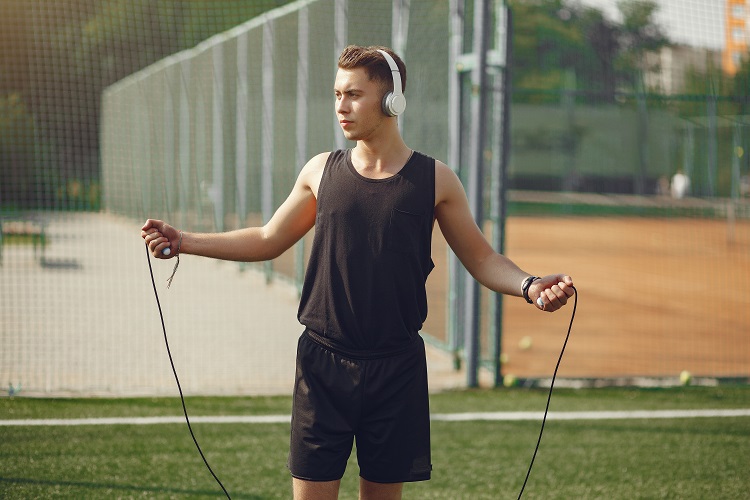Jumping alone does not directly make you taller. Height is primarily determined by genetics and other factors such as nutrition, sleep, and overall health during the growth phase. However, certain physical activities like jumping can have a positive impact on your overall health and potentially contribute to better posture and stronger bones.
Jumping exercises, such as skipping, jumping rope, or even certain types of sports like basketball or volleyball that involve jumping, can help improve bone density and stimulate the release of growth hormones, which may have a slight impact on your height during the growth phase. These activities can also improve your posture and contribute to a more elongated appearance, but they won’t significantly increase your height beyond your genetic potential.
How do genetics and growth plates influence height?

These factors are crucial as they collectively determine an individual’s potential for growth and height. Genetics sets the baseline, while adequate nutrition, proper sleep, and overall health during the growth phase significantly impact achieving one’s maximum height potential.
Factors Influencing Height (Genetics, Nutrition, Sleep, etc.)
Genetics: Genetic factors play a substantial role in determining an individual’s height potential. Height is strongly influenced by the genes inherited from parents. If both parents are tall, it’s more likely for their children to be tall as well.
Nutrition: Adequate nutrition, especially during childhood and adolescence, is crucial for optimal growth. Essential nutrients like proteins, vitamins (especially vitamin D and calcium), minerals (such as zinc and magnesium), and a balanced diet contribute significantly to proper bone development and height.
Sleep: Sufficient sleep is essential for growth and development, especially during adolescence when the body undergoes significant changes. During deep sleep, the body releases growth hormone, which is pivotal for growth and repairing tissues, including bones and muscles.
Growth Plates and Their Role in Determining Maximum Height Potential
Growth plates, also known as epiphyseal plates, are areas of cartilage at the ends of long bones in children and adolescents. These plates are responsible for bone growth and lengthening.
During childhood and adolescence, growth plates remain open and actively contribute to bone growth. As individuals age, typically by the late teens to early twenties, growth plates close, signaling the end of bone growth in height.
The closure of growth plates is influenced by various factors, including genetics, hormonal changes, and overall health. Once the growth plates close, bones lose their ability to lengthen, and further height increase becomes improbable.
What impact do jumping exercises have on height growth?

Understanding the role of jumping exercises in height growth involves recognizing their broader impact on overall health during growth years.
Impact of Exercise on Overall Health During Growth Years
Exercise plays a vital role in overall health during growth years by promoting proper development of muscles, bones, and other bodily systems.
Regular physical activity, including jumping exercises, contributes to improved cardiovascular health, enhanced muscle strength, and better flexibility.
During growth phases, exercise helps maintain a healthy body weight, which indirectly impacts overall health and potentially influences optimal growth potential.
Discussion of Jumping Exercises and Their Effects on the Body
Jumping exercises involve repetitive movements that engage various muscle groups, especially the lower body muscles such as quadriceps, hamstrings, and calf muscles.
Moreover, these exercises, like jumping rope, skipping, or participating in sports like basketball or volleyball, stimulate the release of growth hormone, albeit to a limited extent.
The impact of jumping exercises on the body extends beyond height growth, contributing to improved coordination, agility, and bone density.
Connection Between Jumping and Bone Health
Jumping exercises create an impact on bones due to the gravitational force involved in landing. This impact is known as a weight-bearing exercise that strengthens bones.
The repetitive stress placed on bones during jumping encourages bone mineralization, enhancing bone density and strength.
Increased bone density resulting from regular jumping exercises could potentially reduce the risk of bone-related conditions like osteoporosis later in life.
How does scientific research view the connection between jumping and height increase?
The scientific perspective on jumping and its relation to height increase involves acknowledging the role of exercise-induced growth hormone release while recognizing the inherent limitations imposed by genetics and growth plate closure.
Studies on the Relationship Between Jumping and Height
Several studies have explored the relationship between exercise, including jumping, and its potential impact on height increase during growth years.
Some research suggests that certain exercises, like jumping, may stimulate the release of growth hormone to a limited extent, potentially influencing height during the growth phase.
However, the direct correlation between jumping exercises and significant height increase remains inconclusive, as genetics and growth plates primarily dictate height potential.
The Influence of Exercise on Growth Hormone Release
Exercise, including high-intensity activities like jumping, can trigger the release of growth hormone (GH) from the pituitary gland.
GH plays a crucial role in growth and development by stimulating the growth of bones and tissues. It promotes cell regeneration, muscle growth, and overall body growth.
While exercise-induced GH release contributes to the growth process, its impact on height increase is limited by factors such as individual genetic predisposition and the closure of growth plates.
Understanding the Limitations of Exercise in Height Increase
Genetics remains the primary determinant of an individual’s maximum height potential. Exercise, including jumping, can optimize growth potential but cannot override genetic limitations.
Growth plates close once an individual reaches a certain age, typically by the late teens to early twenties. After this closure, bones lose their ability to lengthen, limiting any further increase in height.
While exercise, including jumping, contributes positively to overall health, muscle development, and bone strength, its ability to significantly increase height beyond genetic potential or after growth plate closure is limited.
FAQ’s
Do active kids grow faster?
Active kids might not grow faster in terms of height, but physical activity supports overall health, including bone density and muscle strength.
What age do girls stop growing?
Girls usually stop growing in height around the ages of 14 to 15 years old, but this can vary for individuals.
Which sports increase height after 18?
Generally, no sports can significantly increase height after the growth plates close, usually around 18 years old or later.
Can you still grow in height at 22?
It’s highly unlikely to grow taller after the age of 22 as growth plates typically close by late adolescence or early twenties.
What foods make you tall?
There’s no specific food that directly increases height, but a balanced diet rich in proteins, vitamins (especially D and calcium), and minerals supports healthy growth.
What is the best sport for a tall person?
Sports like basketball, volleyball, and swimming can be good for tall individuals due to their emphasis on height advantage and physical requirements suited for taller body types.
Final Words
To sum up, how tall we get mostly depends on our family genes and when our bones stop growing. Doing exercises like jumping is good for staying healthy, but it doesn’t make us much taller after our bones stop growing. Eating good food, sleeping well, and staying healthy are important for growing up well.
Even though exercises are good, they might not make us a lot taller if our family genes say otherwise. So, staying healthy is the key to feeling good, even if it doesn’t change how tall we are.

